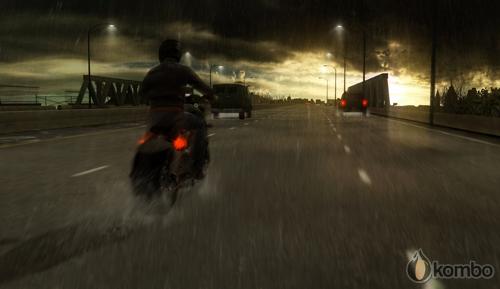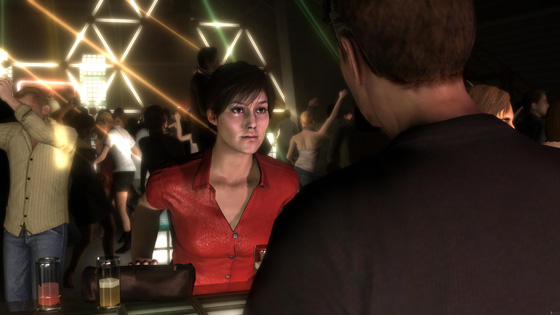Design Discussions: Heavy Rain Vs. The People – Forfeiting Control to the Director (A footnote)
July 13th, 2010

[‘Design Discussions’ is a new, regular-occurring column for Kombo by Daniel Johnson, explicating on elements of game design through a case study approach. This piece is a footnote to the initial column Deconstructing the Video Game: Three Pillars of Design for Interactive Drama (Heavy Rain), so it is recommended that you read the prior article first.]
With contextual interactivity, players are somewhat at the mercy of the director. The director is the person who assigns all points of interactivity and the time frame in which they can be initiated, rather than the player. This system coerces players into cooperating with the narrative, and although a handful of people seem to outright refuse this system, it’s a far more persuasive, even-handed approach towards director control than the alternatives. Let us assess the issue of persuasion with traditional video game narrative techniques and conclude with a contrast to Heavy Rain.
Complete Control – In-game Narrative
Broadly speaking, in recent years, in-game narrative has proven to be a very organic and effective way to deliver supplementary narrative and contextualisation. The sound logs in Dead Space which play over gameplay are one such example commonly used throughout the industry (also seeBatman: Arkham Asylum and Bioshock). Despite the successes in conveying minor information, in-game narration is an unreliable way of delivering important information to the player as it only leads the horse to water. As anyone who has ever played with the gravity gun while sitting through one of Alyx’s talky scenes in Half-life 2 can attest, there’s no guarantee that players will cooperate or pay attention, particularly when they’re given the liberty of retaining their regular ability set.
No Control – Cutscenes
So how does one make the player cooperate? By taking complete control away through the form of a cutscene. Cutscenes are embroiled in their own infamy in that they can feel as though the designer is taking over, and in some cases, dominating the interactive experience. Players can get particularly antsy during unskippable or overly long cutscenes, which is why they must be well implemented such as a reward for an extended period of play or to conclude/open a chapter or scene. Even though cutscenes are loathed by some, they are an infallible means of control for developers to steer the narrative.
Partial Control – “Disabled Scenes”
A recent hybrid of the cutscene and in-game narrative (perhaps slanting closer to the latter), are the scenes where the majority of the player’s mechanics are disabled besides those which allow the player to observe (walking, camera movement). Batman: Arkham Asylum‘s introduction scene did this particularly well as Batman and company wheeled a bound Joker into Arkham Asylum, giving air time to the Joker’s menace. These scenes walk the line between the two other techniques.
Conclusion
The problem with these techniques is that it creates rifts of uneven control. One minute you’re playing the game, maybe absorbing some in-game narrative on the side, then you’re passively taking part in an interactive cutscene, which prompts a cutscene with no control whatsoever and then you’re free to keep playing. The gears of interactivity are constantly switched back and forth that inevitably creates a consciousness which removes the player from the experience.

In Heavy Rain, these bumps are smoothed out and the level of control remains constant throughout. There are scenes where you can walk around and explore, and scenes which are closer to interactive cutscenes, yet the disparity between the two is minimal. Heavy Rain also trains the player to always be ready for action from the beginning which allows the switch to be more seamless. This is all very similar to the principles behind Dead Space‘s narrative (the in-game HUD and narrative) where breaks in immersion are avoided. Because the level of control remains consistent, Heavy Rain is capable of creating narrative experiences which are highly immersive, but also avoids the contrived nature of games like Dead Space.



 Game Design Companion: A Critical Analysis of Wario Land 4 - $7.99
Game Design Companion: A Critical Analysis of Wario Land 4 - $7.99 Level Design: Processes and Experiences
Level Design: Processes and Experiences Speed Boost: The Hidden Secrets Behind Arcade Racing Design - $5.99
Speed Boost: The Hidden Secrets Behind Arcade Racing Design - $5.99 Adventures in Games Analysis: Volume I - $5.99
Adventures in Games Analysis: Volume I - $5.99







